The U.S. Embassy has officially announced the opening of the 2026 Diversity Visa Lottery Program (DV-2026) recently. Registration for DV-2026 begins at noon Eastern Daylight Time (EDT) on Wednesday, October 2, 2024, and will close at noon Eastern Standard Time (EST) on Tuesday, November 5, 2024. If you wish to win the DV-2026 and be qualified for the application, you will need to submit a compliant DV lottery photo.
In this post, we’ll guide you through the essential DV Lottery photo requirements, highlight common mistakes that applicants often make, and provide tips to help ensure your photo meets the official standards. Following these guidelines can improve your chances of a successful application.

DV Lottery 2026 Photo Requirements
While registering for the Diversity Visa Program online, you need to upload a digital image which should be in JPEG form, less than 240kb, and at least 600×600 pixels in a square aspect ratio. It is permitted to convert a paper photo into digital form, but make sure the existing photo is 2″ x 2″ (51 x 51 mm) and scanned at a resolution of 300 pixels per inch. Don’t scan the photo on passports, driving licenses or other official certificates.
After being selected for the program, you should bring two 2 x 2 inch identical photos to the interview. Please print it on premium photographic paper. In this section, we have listed the detailed DV lottery photo requirements below:
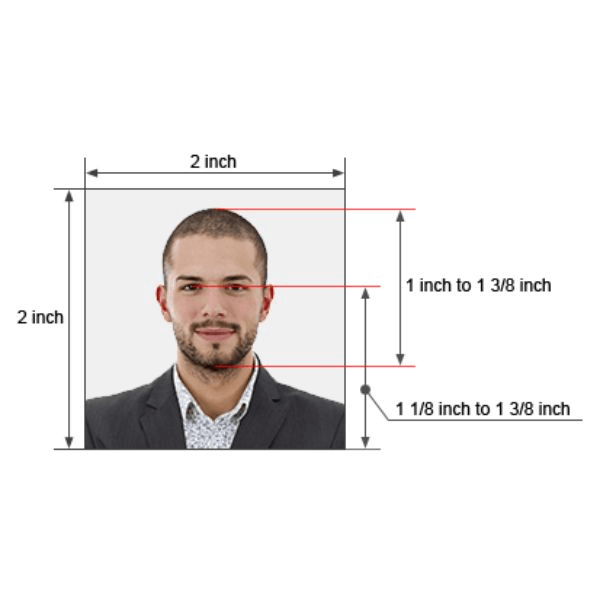
- The photo must be colored.
- The photo must be taken within the last six months and match your current look. Never use the same photo as your last DV lottery application.
- Make sure your head, from chin to the top of the head) takes up 50% – 69% within the whole frame vertically, measuring around 1-1 3/8 inches (22 – 35 mm).
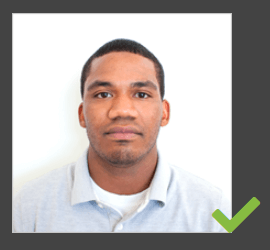
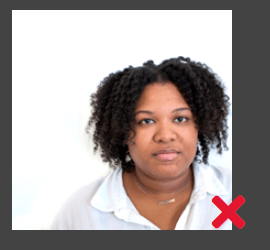
- You should take the picture in front of a plain white or off-white background.
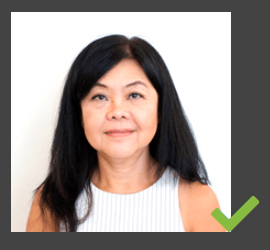
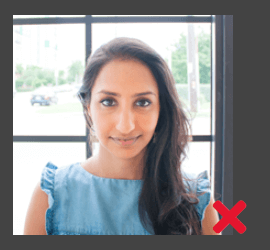
- Show the full face and face the camera directly.
- Hold a neutral facial expression with eyes open.
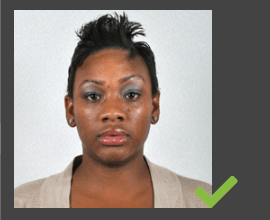

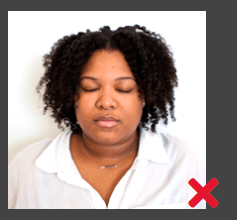
- Put on everyday wear and casual clothing. Uniforms are prohibited unless it is daily worn for religious reasons.
- Hats and head coverings in case of hiding hair or hairline. Religious veils on a daily basis are accepted as long as it does not cover your face or cast shadows. Hats are not allowed.
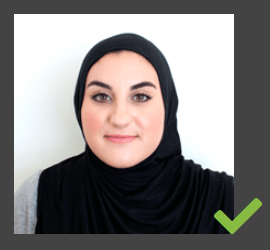
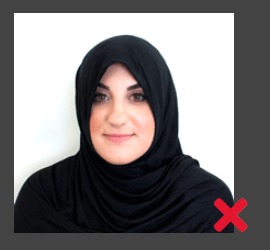
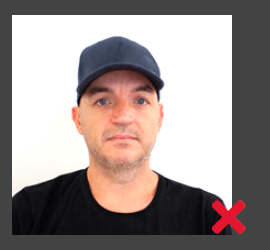
- Headphones, earphones or similar headsets are not allowed to appear.
- Eyeglasses are not acceptable from November 1, 2016. Remove your eyeglasses when shooting the picture.
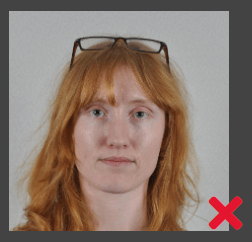
Common Mistakes of Unqualified DV Lottery Photo
Submitting an unqualified photo is one of the most common reasons for disqualification in the DV Lottery. Many applicants overlook the strict photo requirements, leading to mistakes that can void an otherwise complete application. In this section, we’ll explore the most frequent mistakes applicants make when submitting their DV Lottery photos and provide tips on how to avoid these pitfalls to increase your chances of success.
Wrong Picture Size, Pixel or Format
One of the most common mistakes in DV Lottery photo submissions is using the wrong picture size, pixel dimensions, or format. Your photo must be exactly 600×600 pixels and saved in JPEG format, or your application could be instantly disqualified.
- Wrong Photo Size
The DV lottery photo must be 2×2 inch, with your head 1-1.375 inch, and your eyes to the bottom of the picture measuring 1.125-1.375 inch.
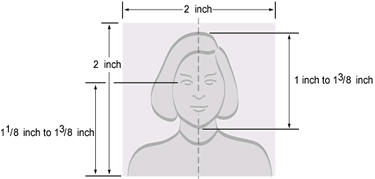
It can be hard to crop it precisely if you crop it using a cellphone. However, with online DV lottery photo tools like AiPassportPhotos, you can resize your picture to meet the specific size and length automatically. This online DV lottery photo tool will scan your face, replace the unqualified background and resize it to DV lottery photo size.
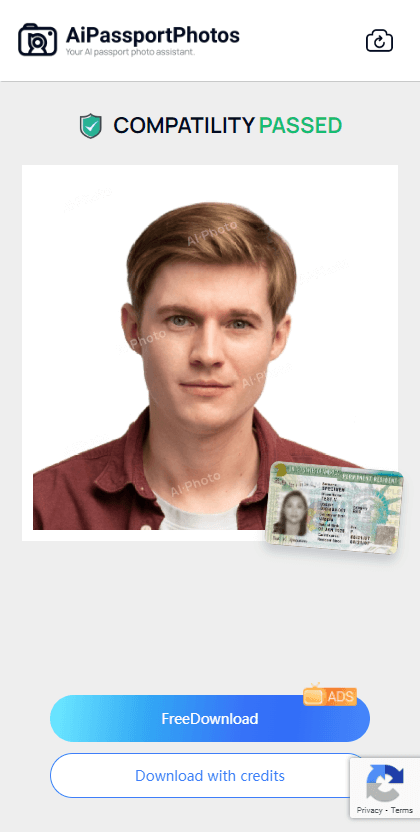
- Wrong Pixels
Any photo violating the 1:1 aspect ratio or out of the pixel range (600 x 600 – 1200 x 1200) would be rejected. It might be banned even if it looks like a square. Make sure to crop it with a professional tool.
- Wrong Format
Any other format except JPEG (.jpg) is accepted. Common types like PNG, GIF, etc. can be converted into JPEG in image editors. File size should not exceed 240 KB.
Incorrect Background
A plain white or off-white background is needed for DV lottery photos. Other colors such as red, blue, or light gray are not allowed. Moreover, backgrounds with stains, uneven texture, shadows and patterns are all common examples of rejection. When taking photos in a studio or photo store, you don’t need to worry about this issue. When taking it at home, we suggest you to find a plain white wall as the photo background or use an online DV lottery photo tool to help you replace it with a proper background.

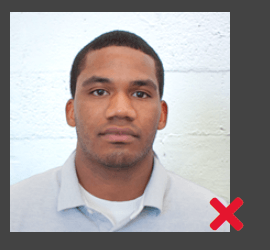
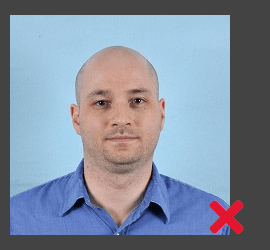
Poor Lighting and Shadows
As it is clearly stated in the DV lottery photo requirements, you should be aware that a photo with uneven lighting would be possibly rejected. Poor illumination would result in shadows on the face and background, underexposure, overexposure, or red-eye effects. Insufficient lighting would darken and blur the subject. The officer would say NO to such a photo.
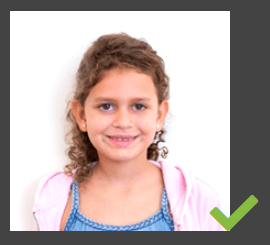
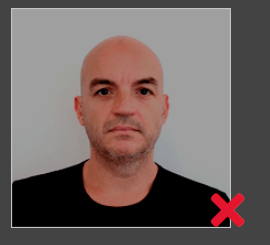
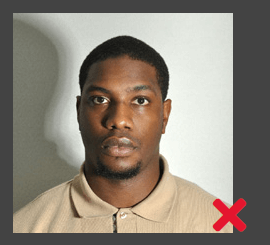
Non-Neutral Facial Expressions
A gentle smile makes you look better, but it is not recommended. A neutral expression prevents your facial features from being distorted. Exaggerated expressions or funny faces are common in life photos, such as grinning, laughing, frowning, pouting, etc., but they are not allowed in a diversity immigrant visa application. Pay attention to it especially when taking a shot for kids.
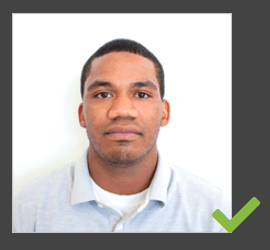
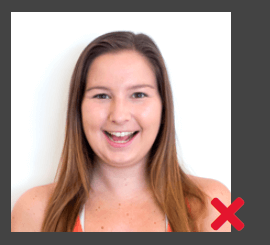
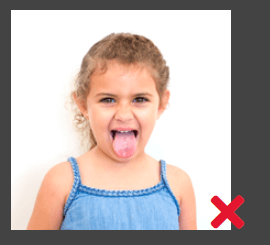
Wrong Pose
Your head must be centered and occupy at least 50% of the frame. Look straight at the camera. Looking around, tilting or lowering your head, and shrugging your shoulders would lead to disqualification from the US visa lottery. Additionally, do not leave your hair covering part of your face.

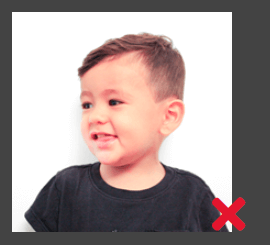
Improper Dressing
As only your whole face and upper shoulder are shown, there is no specific dress code. You should wear everyday clothing that reflects your normal appearance. Avoid uniforms, except for religious clothing that you wear daily. Stay clear of bright patterns, logos, or distracting accessories. It’s also recommended to wear solid, neutral colors, as they look best against the plain white or off-white background required for the photo. Keep jewelry and accessories minimal, and make sure your face is fully visible, with no hats or head coverings unless worn for religious purposes.
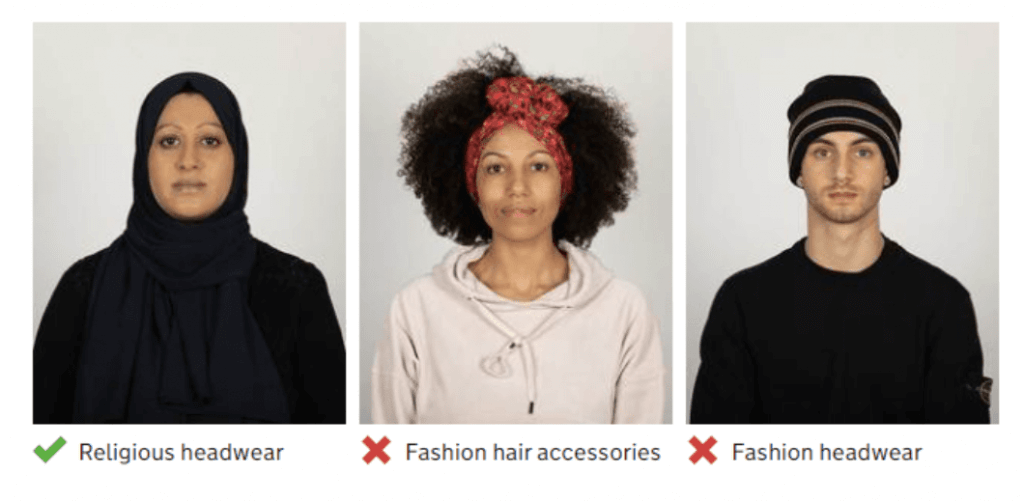
Photo Modification or Over-editing
One common mistake when taking a U.S. DV lottery photo is over-editing or using Photoshop to alter the image. While basic adjustments like cropping or resizing are acceptable, altering facial features, skin tone, or retouching too much can cause your photo to be rejected. The U.S. Department of State requires the photo to reflect your natural appearance without heavy digital modifications.
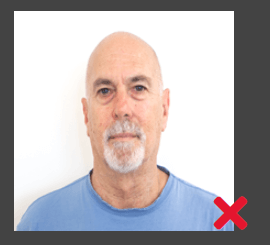
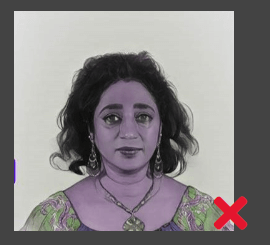
How to Ensure DV Lottery Photo Compliance
To avoid disqualification in the DV Lottery, it’s crucial to ensure your photo meets the official requirements. Whether taking it at home or with a professional, details like background, lighting, and image size are key. Here’s how to ensure your photo meets the standards.
Use a Professional Photographer or Service
Visit a studio that is familiar with U.S. DV lottery photo requirements to avoid errors. Professionals will know the correct specifications for size, background, and lighting. If you are physically in the US, you may visit Walmart, Walgreens, CVS, FedEx, etc., for a professional photo shooting and printing service. However, these services might cost a few dollars.
Use Online DV Photo Checkers to Check Compliance
Before submitting your photo, use online DV Lottery photo checker tools to ensure it meets the official standards. These tools help verify dimensions, head positioning, and other criteria.
Take Photos at Home with Care
If you wish to save money and time, consider taking a photo with your cellphone at home and cropping it with AiPassportPhotos without a penny. AiPassportPhotos is an online DV lottery photo tool to resize your picture to 600×600 pixels within seconds. Simply upload your picture to the website and get a qualified DV lottery photo online.
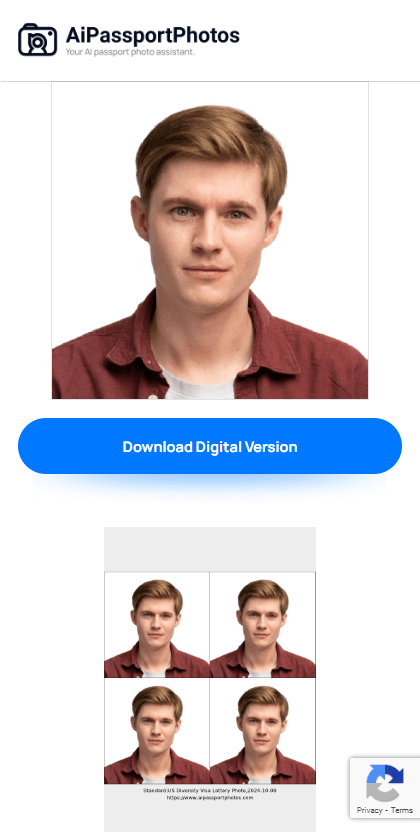
Before resizing it online, set up a plain white background with even lighting and position the camera at eye level. Use a good-quality camera or smartphone to capture a clear, compliant image.
Test and Preview Your Photo
Always verify the image size, head positioning, and background before submitting. This will help you catch any issues early and retake the photo if needed.
Avoid Editing Tools Beyond Basic Adjustments
Stick to simple cropping or resizing. Avoid heavy retouching or filters, as over-editing can lead to disqualification. The photo must reflect your natural appearance.
Bonus Tips for DV Lottery Photos for Babies or Toddlers
If your little kid needs to be held, don’t capture the other person or any part of his/her body in the photo. it is suggested to lay it down on a white or off-white sheet and take a shot from above. In this way, your baby doesn’t need to be supported by another person.
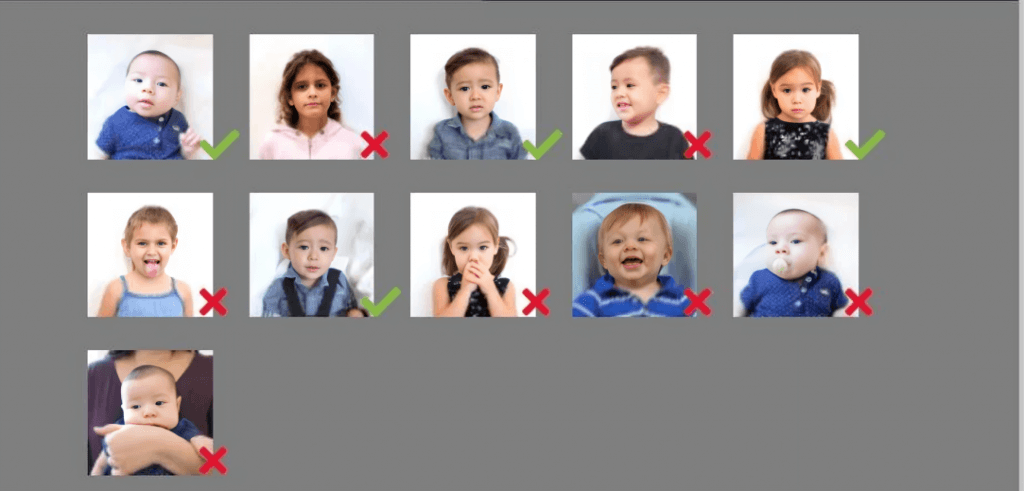
For toddlers too young to stand upright, you can place it in the car seat and cover the car seat with a white cloth, or put it in a high chair and hang up a white sheet behind it. Then you can snap a picture from the front.
Please note that babies or toddlers also need to look at the camera with open eyes.
FAQ
Does the photo matter in a DV Lottery?
Yes, the photo is crucial in the DV Lottery application. If it doesn’t meet the official requirements, your entry can be disqualified, regardless of the rest of your application.
Can I take DV photo with my phone?
Yes, you can take your DV Lottery photo with a phone, as long as it meets the official requirements for size, lighting, background, and quality. Make sure to use a high-resolution camera and follow the guidelines closely.
Can I use the same photo for DV Lottery?
No, the old photo for your last DV lottery application is not allowed. We suggest you to take a new picture for DV lottery application.
Should ears be seen in a DV lottery photo?
No, it’s not required for your ears to be visible in a DV Lottery photo. The key requirement is that your full face is visible, from the top of your head to the bottom of your chin, with a neutral expression and no obstructions.
What are DV lottery photo checkers?
DV lottery photo checkers are online tools that help applicants verify if their photos meet the official requirements for the Diversity Visa Lottery. These checkers assess factors like size, background, head positioning, and overall compliance with the U.S. Department of State’s guidelines. These include the official DV photo checker, AiPassportPhotos, and so on.
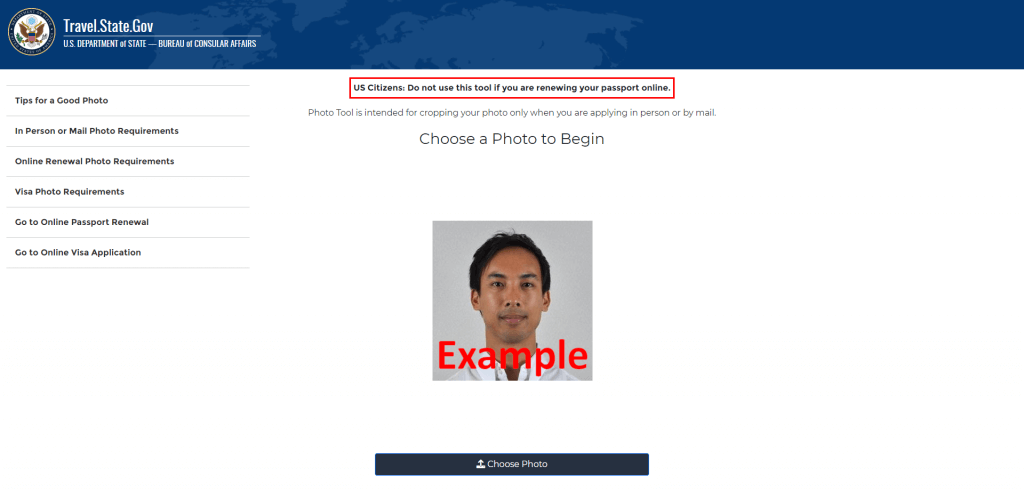
Final Thoughts
DV lottery application is held once every year. In order to make everything go smoothly, you have to make full preparations. We hope this passage can enhance your confidence in making a compliant biometric image. It is suggested to get acquainted with DV lottery photo requirements and avoid the listed common mistakes in size, format, background, lighting, facial expressions, pose, dressing and photo quality. With our DV lottery photo tool, you will feel free to make it at home with the least expense and time.